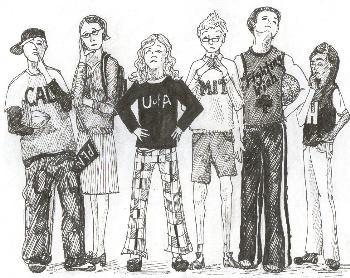
News
Pro-Palestine Encampment Represents First Major Test for Harvard President Alan Garber

News
Israeli PM Benjamin Netanyahu Condemns Antisemitism at U.S. Colleges Amid Encampment at Harvard

News
‘A Joke’: Nikole Hannah-Jones Says Harvard Should Spend More on Legacy of Slavery Initiative

News
Massachusetts ACLU Demands Harvard Reinstate PSC in Letter

News
LIVE UPDATES: Pro-Palestine Protesters Begin Encampment in Harvard Yard
The Year of the
Young voters may swing this year's election

Ever since “Soccer Moms” catapulted Bill Clinton to the White House, the TV talking heads and political pundits have spent each election cycle searching for the swing demographic that will determine the outcome. In 2000, Bush won by courting “Nascar dads,” this year the consensus among political professionals is that it’s “security moms” that will pick our next President. In all three debates, both candidates made targeted appeals to these voters. All this focus on “security moms,” however, may be obscuring an equally, if not more important, trend: the rise of the young voter. In 2004, the candidate who wins will be the candidate who can swing the “college kid” demographic.
Conventional wisdom has almost always ignored the youth vote. Despite Rock the Vote and other get-out-the-vote efforts, the sad truth according to most politicians is that young people just don’t vote. In the past, they were right. Since 1972, the percentage of young voters as a share of the electorate has declined steadily. Young voters are notoriously difficult to reach and expensive to find. This year, however, both empirical and anecdotal evidence suggest that things are very different.
The first signs of youth resurgence could be found in the Dean campaign. The famous (or now infamous) “Perfect Storm” of Dean campaign volunteers was largely comprised of young people. The data from the primary contests buttressed the trend. For example, in the Iowa Caucuses, youth voter participation quadrupled. Now, as we head into the homestretch of the general election campaign, the reemergence of the “college kid” demographic cannot be ignored. In an election that will likely turn on a select few battleground states, registration data from these states suggests that the young voters just might be the ones to tip the scales.
According to the Columbus Dispatch, in Ohio’s three largest counties 38 percent of 361,473 newly registered voters are ages 18 to 25, a remarkable increase compared to previous election cycles. In Ohio counties with major universities, the number of new registrants has either doubled, or almost doubled. In Iowa, the Des Moines Register reports that 81,000 new voters have registered since the beginning of the year, many through the New Voters Project (NVP), a non-partisan group aiming to boost youth turnout. The efforts of NVP extend beyond just Iowa; in Wisconsin the group has registered 124,000 18 to 25 year olds. Even in Florida, where the difficulties of new registration have been the subject of intense inquiry, evidence suggests there has been a significant rise in youth voter registration. In Miami-Dade County, registration is up 61 percent, and according to the St. Petersburg Times, activism on campuses across the state is unprecedented.
What makes these new young voters such critical targets as we head into the final weeks is that many still haven’t made up their minds. According to the most recent Zogby Poll, 9 perent of young voters remain undecided and their allegiance continues to shift. While Senator Kerry led among the group for most of the year, tracking data in the last few days shows President Bush holding a slim 4 percent lead.
With registration rapidly rising and polling data constantly shifting, who these 18-25 year old “college kid” voters finally settle upon may just make the difference in which candidate ends up in the White House.
Adam Katz ’07, a Crimson editorial editor, is a government concentrator in Kirkland House.
Want to keep up with breaking news? Subscribe to our email newsletter.
